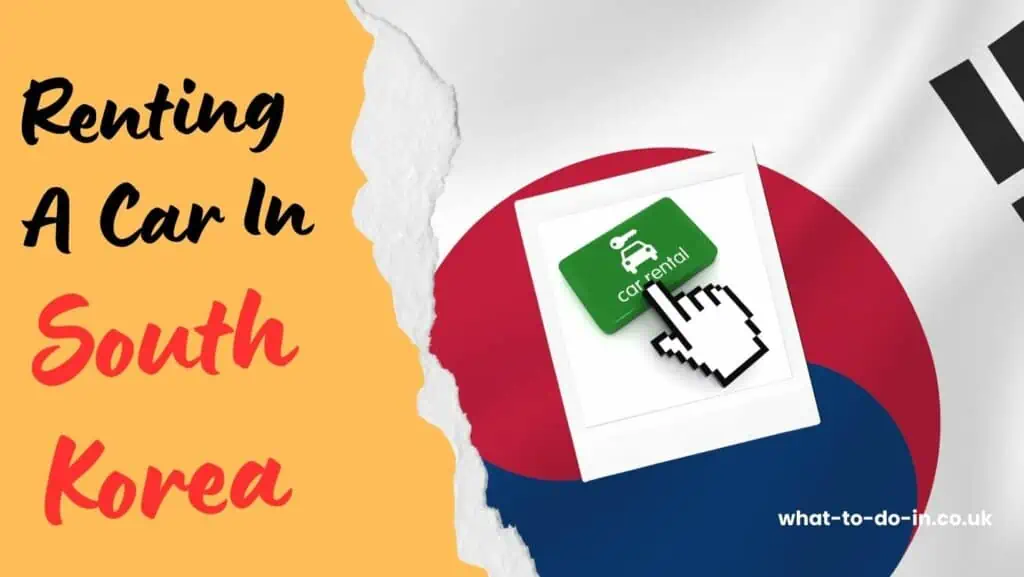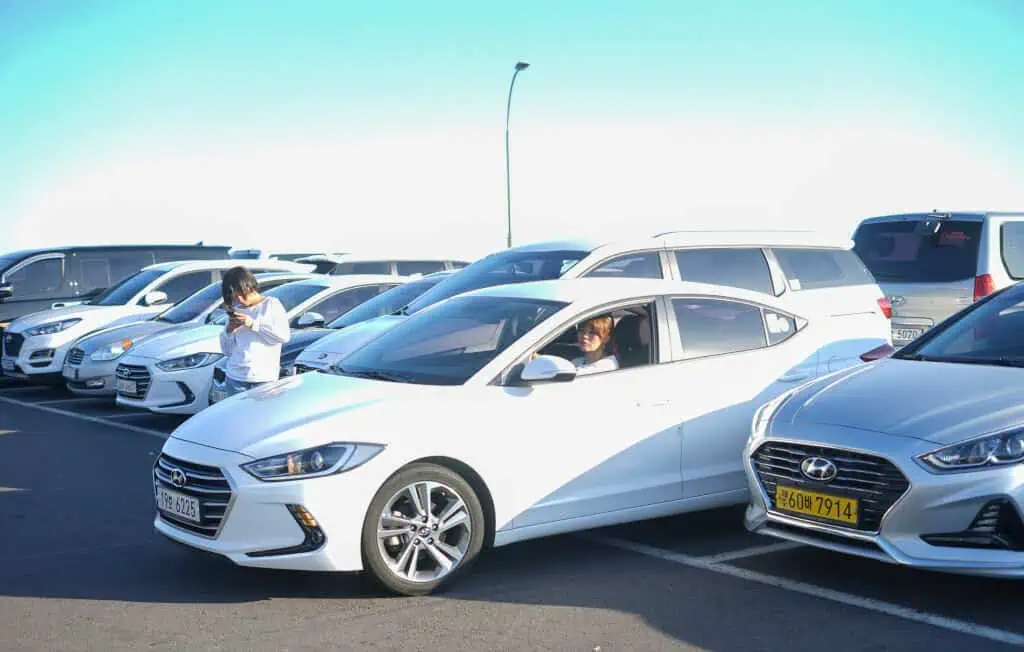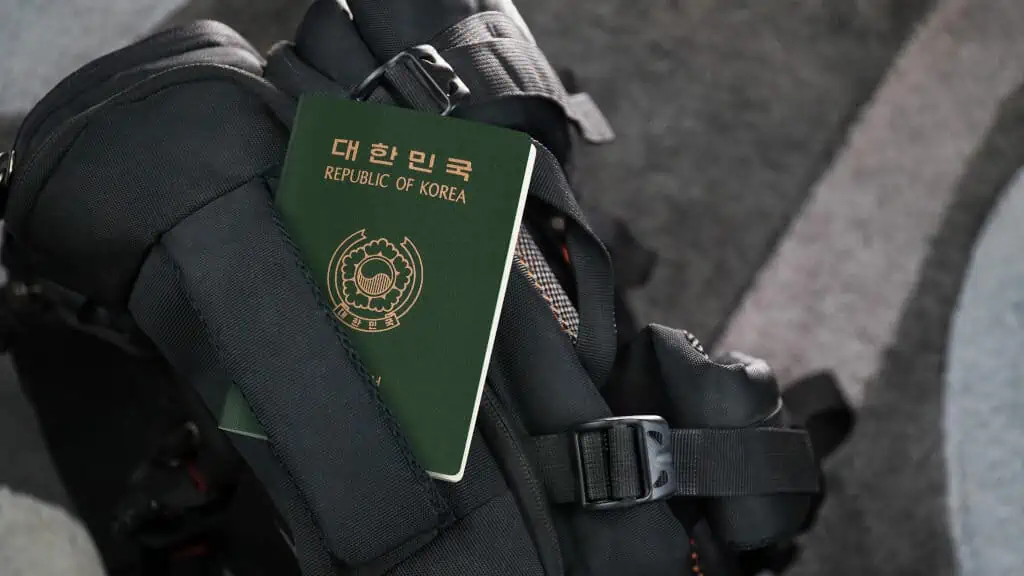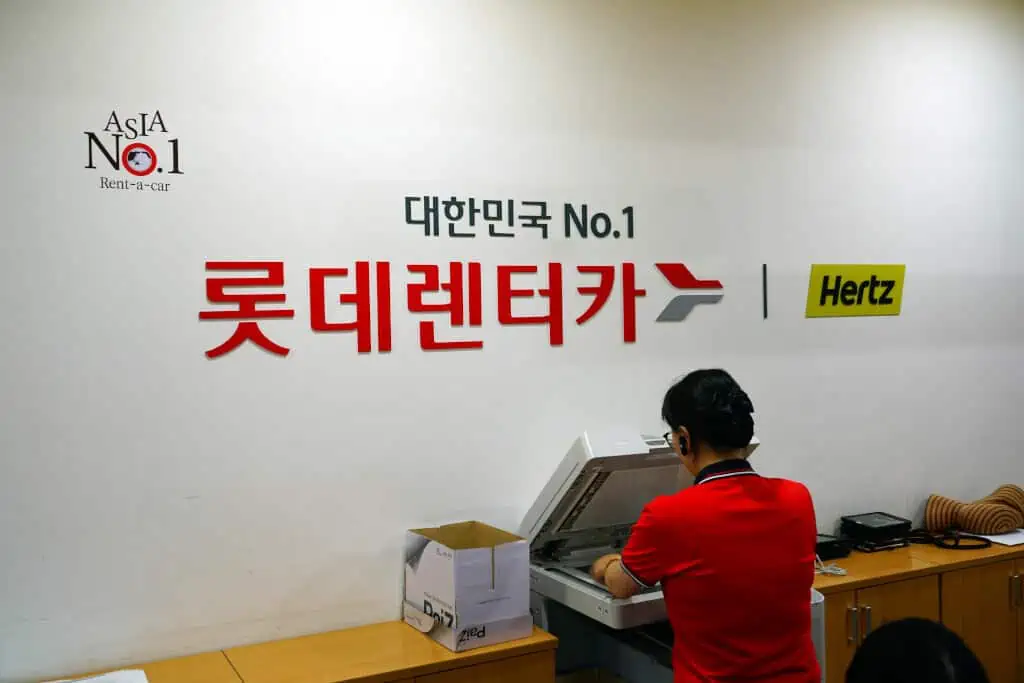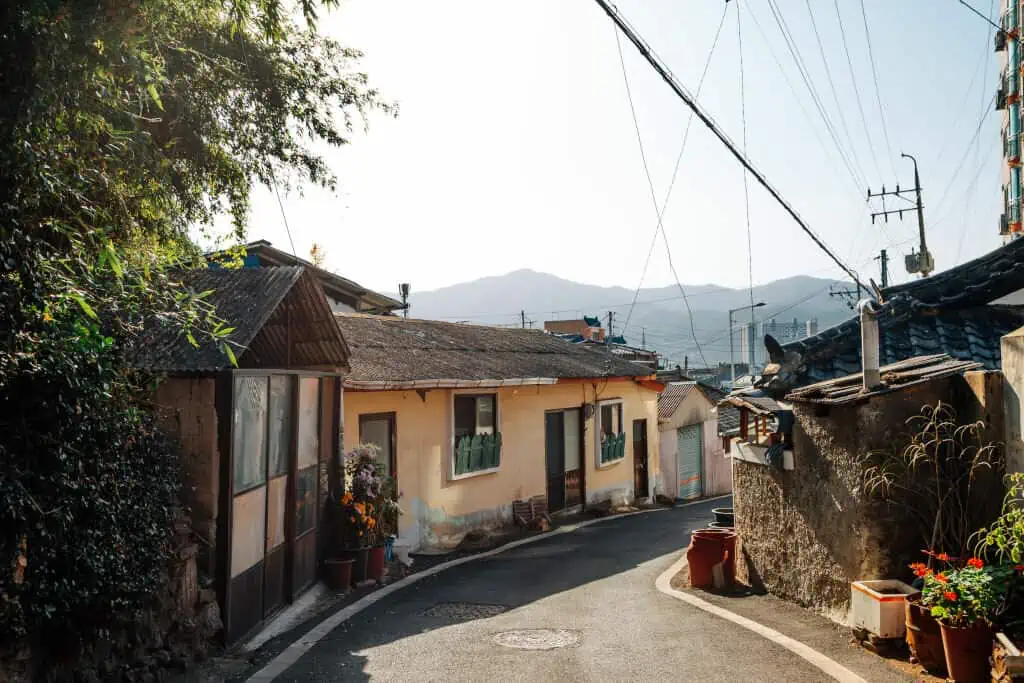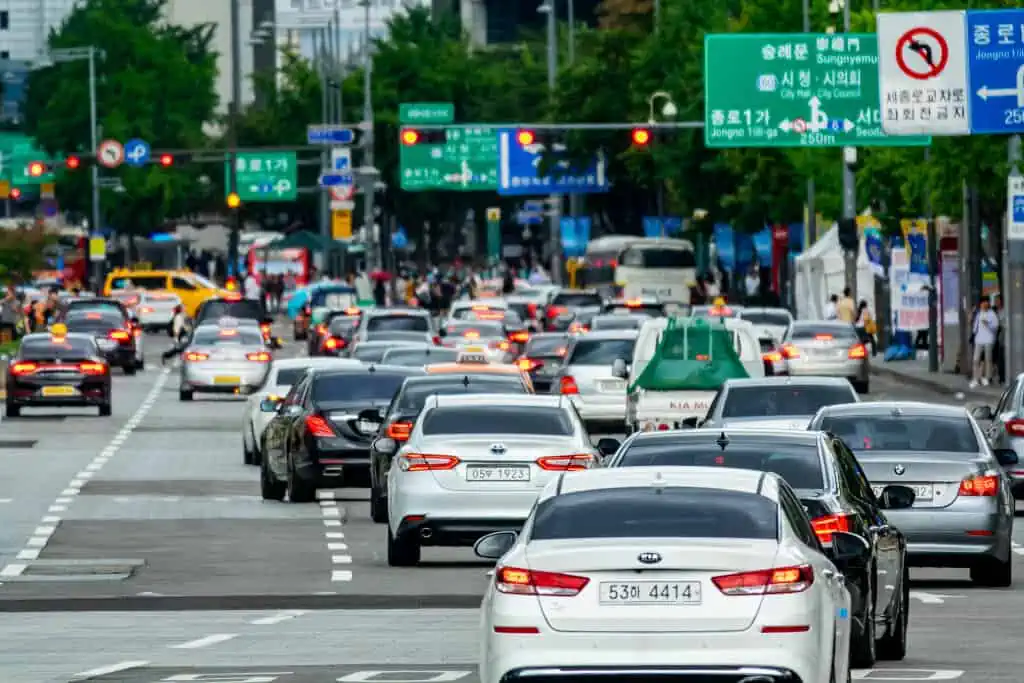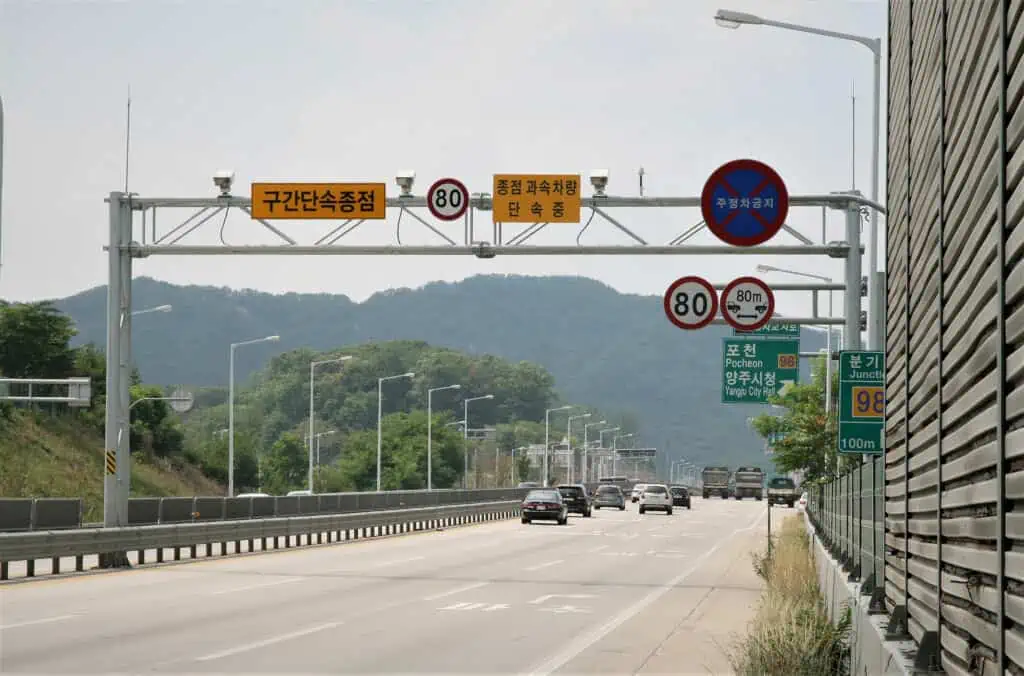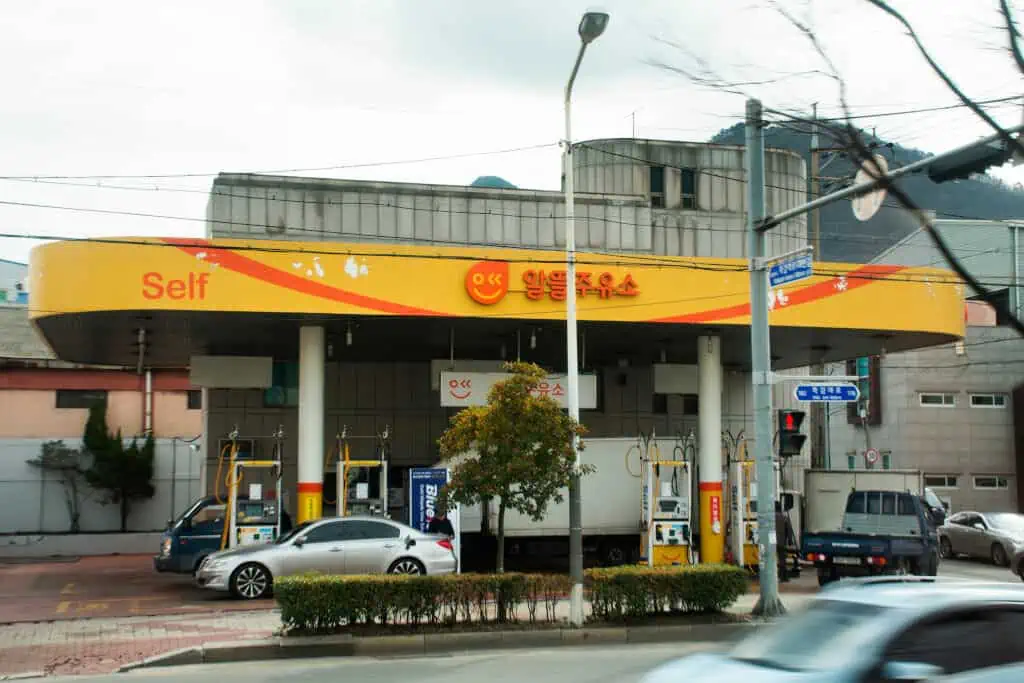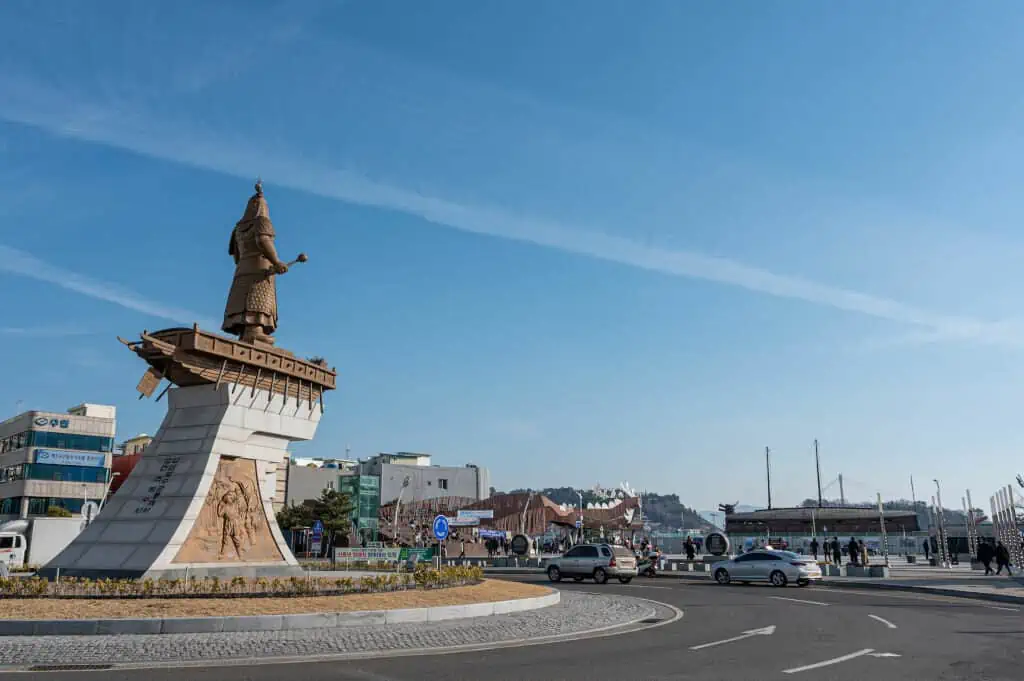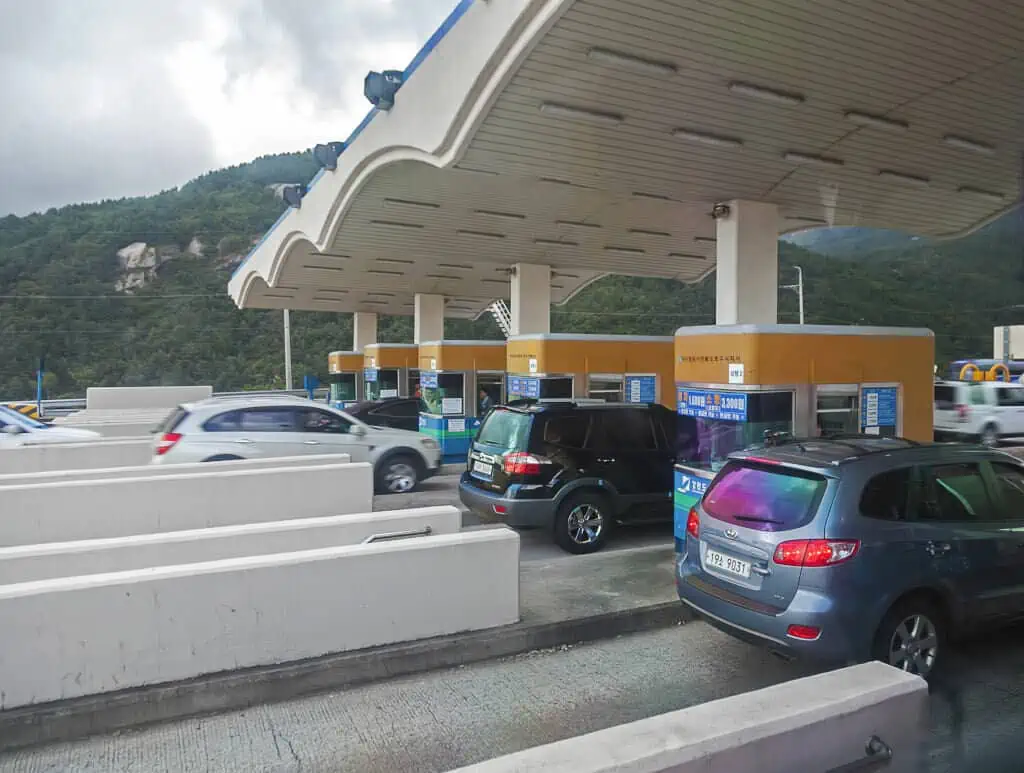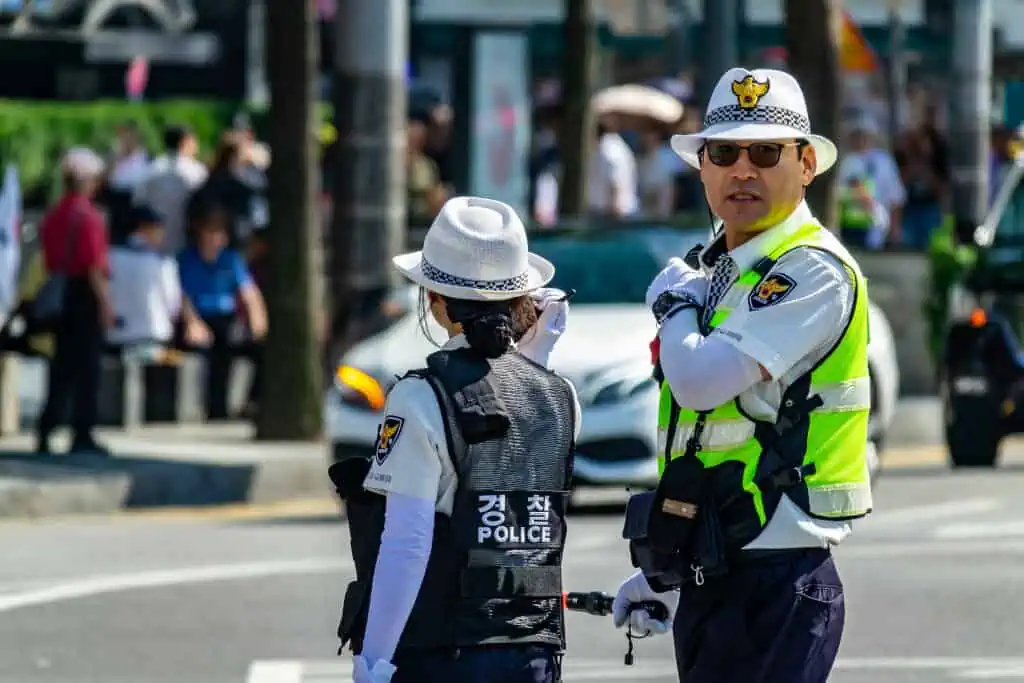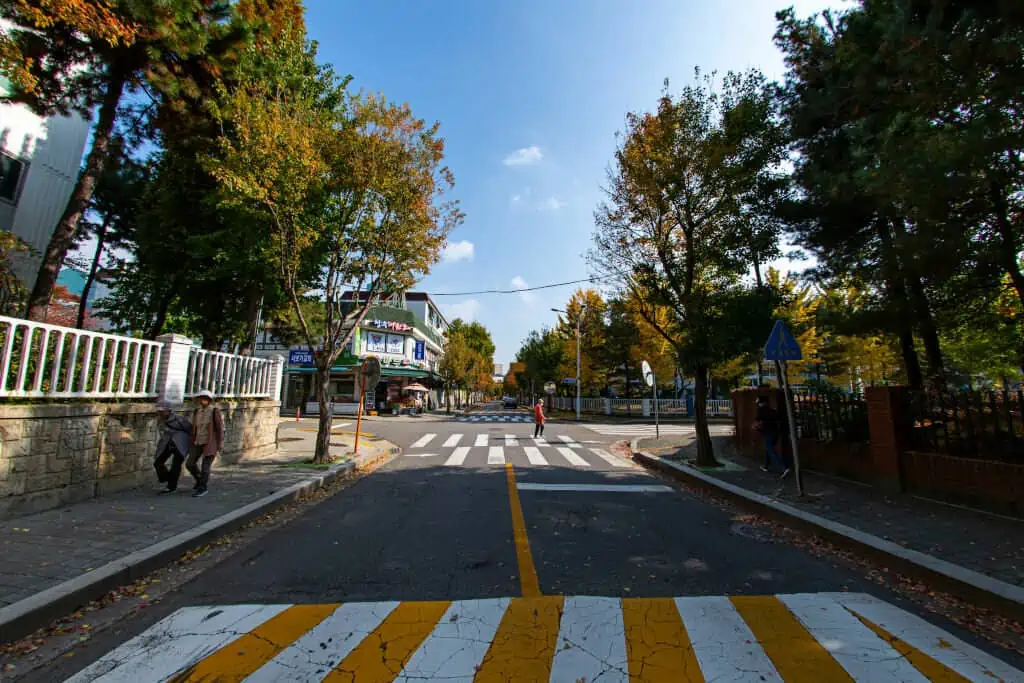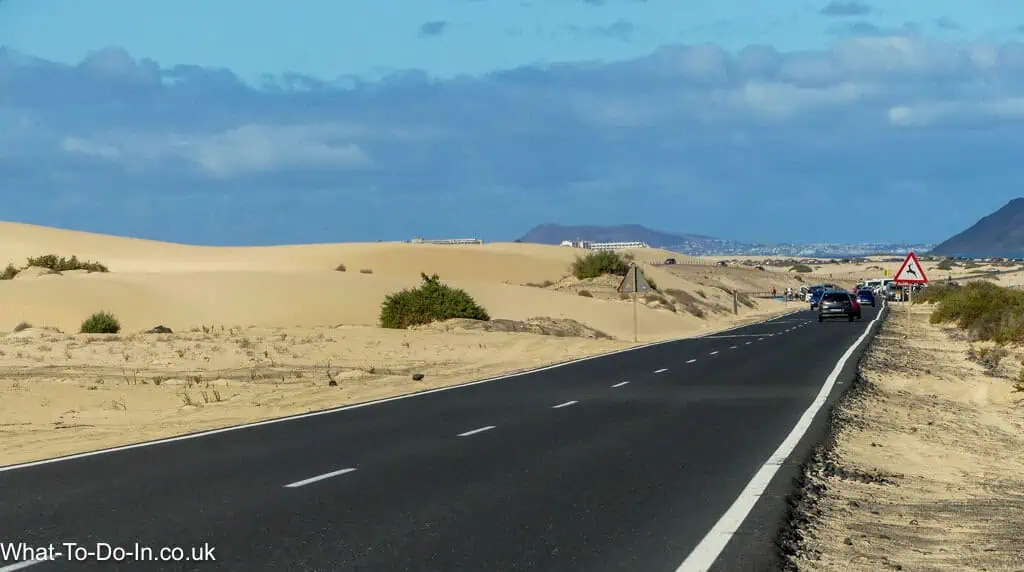Exploring South Korea’s vibrant cities, lush countryside, and coastal highways becomes a hassle-free adventure with the convenience of a rental car, leading many visitors to opt for this personal mode of transportation. In 2019, South Korea witnessed an impressive spike in the number of tourists seeking rental vehicles, with a recorded 30% increase in rental car reservations by foreign visitors, underscoring the growing trend toward independent travel. The allure of self-guided tours through the historic alleyways of Jeonju, the expansive tea fields of Boseong, or the bustling streets of Seoul is drawing travelers to seek the flexibility that comes with having their own set of wheels. With a well-defined network of roads, including meticulously maintained expressways, South Korea presents an inviting landscape for drivers. Renting a car, however, entails navigating a series of procedures and considerations, from understanding local driving regulations to choosing the appropriate vehicle for your journey. The process involves thorough documentation, including a valid International Driving Permit (IDP), which must accompany your national driver’s license, and an understanding of insurance options to ensure a smooth rental experience. Whether it’s a compact car for city driving or an SUV for more rugged terrain, the country’s extensive rental services cater to a broad spectrum of needs and preferences, promising a tailored travel experience for those behind the wheel.
Why Rent a Car in South Korea?
During our travels through South Korea, my husband Aidan and I discovered that renting a car significantly enriched our experience. South Korea boasts an incredibly efficient and comprehensive public transport system, yet the freedom of a car allows you to explore hidden gems and rural locales that lie off the beaten path, at your own pace and convenience. Navigating the country’s modern highways and scenic byways in a rental car opens doors to spontaneous adventures, from savoring street food at a countryside market to capturing the sunrise on a secluded beach. Beyond major cities like Seoul and Busan, there’s a whole other side of Korea waiting for you – bespoke and immersive. Renting a car simplifies the logistics of visiting sights such as the tranquil temples, verdant mountains, and serene coastlines that public transport can’t always conveniently reach.
To truly appreciate the advantages and consider the practicalities of renting a car in South Korea, join us as we delve deeper into the specifics in the following sub-sections, which cover everything from the nuances of Korean driving etiquette to tips for international travelers on how to secure a rental car. Buckle up for a comprehensive guide to traversing the Land of the Morning Calm behind the wheel!
What Size Rental Car: Big or Small?
When considering the size of a rental car, the decision can be shaped by various factors including comfort, maneuverability, and practicality. Having navigated the streets of South Korea in both oversized sedans and compact hatchbacks, we’ve gleaned some insights worth sharing.
The Case for Big Cars
Renting a larger car typically provides a more spacious interior, which can be a significant comfort factor, especially if you’re traveling with family or a group. During our journey to the scenic stretches of Jeju Island, the extra luggage space in our sizable rental was invaluable for our gear and souvenirs.
Another advantage of a big car is stability. South Korea’s expressways can be fast and busy, and a heavier vehicle can offer a smoother ride, which can be a blessing on longer journeys. Additionally, if you’re heading to areas with challenging terrain or inclement weather, a bigger car with better road presence might make for a more secure experience.
Opting for a Small Car
Conversely, smaller cars have their unique set of perks, particularly in highly urbanized areas. Navigating the bustling streets of Seoul, for instance, is far easier with a compact car. Tight parking spots and narrow lanes are prevalent throughout the city, and a smaller vehicle can save you from a lot of potential headaches.
Fuel efficiency is another persuasive point for renting a small car. You’ll often find that your travel budget stretches further with the reduced fuel consumption of a compact vehicle – an aspect we certainly appreciated during our extended stay in the city centers.
Moreover, the ease of finding a rental is something to consider. Smaller cars are typically more available and can be cheaper to rent, meaning you might secure a better deal if you’re willing to compromise on space.
In essence, the size of the rental car you choose will depend heavily on the nature of your trip, your personal preferences, and the requirements of the roads you will be traversing. Whether you prioritize comfort or convenience, South Korea’s diverse environments cater to both ends of the spectrum.
Picking up your Rental Car
Throughout our adventures, Aidan and I have had the pleasure of exploring South Korea’s vibrant landscapes and bustling cities, often relying on the convenience of rental cars to do so. South Korea is well equipped to cater to travelers choosing to rent a car, with numerous rental options available across the country.
Major Airports
One of the common places we’ve picked up a rental car is at the major airports. Incheon International Airport, serving as the gateway to Seoul, offers a seamless rental experience. Similarly, we have utilized car rental services at Gimpo International Airport, Busan’s Gimhae International Airport, and Jeju International Airport. Each of these airports hosts multiple rental desks of reputable companies.
Urban Car Rental Hubs
Beyond airports, cities like Seoul, Busan, and Daegu have downtown rental locations. These urban hubs are convenient if you’re looking to navigate the metropolitan roads or if you’re planning an excursion outside the city limits. Despite the dense urban traffic, having a car at your disposal provides the flexibility to visit destinations at your own pace, which is particularly beneficial when attempting to cover the vastness of South Korea’s urban sprawl and rural charms alike.
Rental Desk Experience
The rental desks inside the airports and city centers are always staffed with friendly personnel, making the pickup process as smooth and welcoming as possible. Communicating in English has never been an issue for us; the staff are usually well-versed in assisting international travelers. Their efficiency and readiness to help always stand out, contributing to a stress-free start to our driving adventures in this dynamic country.
Insurance, Excesses and CDW
When traveling to South Korea, one common mode of exploration is by renting a car. However, it’s crucial to understand the legal requirements and the various options for rental car insurance before embarking on your journey. Insurance is not just a safety net; it’s a legal necessity in South Korea for car renters.
Understanding Rental Car Insurance in South Korea
In South Korea, the law requires every rental car to have a basic level of insurance coverage. This includes third-party liability and personal accident insurance, which covers damage to other vehicles, property damage, and personal injuries to yourself and passengers. However, the basic coverage often comes with significant excesses (the amount you’ll have to pay towards a claim).
What Are Excesses?
An excess is the amount you are responsible for before the insurance covers the remaining costs. In South Korea, this can range from a small amount to thousands of dollars. Paying attention to the excess amount is vital when choosing a rental car, as it could significantly impact your budget if any accidents occur.
Collision Damage Waiver (CDW)
Most car rental companies in South Korea offer a Collision Damage Waiver (CDW), which reduces the renter’s financial liability in case of damage to the rental car. The CDW is not insurance in the traditional sense, but rather an agreement that limits how much you’ll have to pay for repairs, usually to a lower, manageable amount.
Here are a couple of reasons you might want to fully cover your excess:
1. Peace of Mind: By opting for additional coverage, like Super CDW (which further reduces the excess) or a non-waivable excess, you can rest assured that in the case of an accident, you won’t face steep, out-of-pocket expenses.
2. Unforeseen Circumstances: Road conditions, traffic rules, and driving habits in South Korea may differ from what you’re used to. Full coverage shields you from the financial implications of these unforeseen circumstances.
For anyone planning to rent a car in South Korea, it’s imperative to read the small print of any rental agreement. Take your time to understand what you are and are not responsible for. Exclusions could include tire or windscreen damage, overhead damage, or interior damage. Every detail counts, and being informed will save you from unexpected charges.
To get the most accurate and official information about car rental insurance requirements in South Korea, it is best to consult local authorities and trusted car rental agencies. For instance:
- The Korea Tourism Organization can provide travelers with resources and advice for driving in South Korea.
- Detailed legal requirements can be found through the Korea Legislation Research Institute.
Before signing any contract, review all your options, and choose the one that best suits your needs and comfort level for a worry-free journey across the enchanting terrains of South Korea. Remember, the right insurance is key to a hassle-free road trip!
Renting Eligibility
Legal Driving Age
In South Korea, the legal age to drive is 18 years old, which aligns with many other countries. This is an exciting opportunity for young adults who have reached this milestone and are eager to explore the roads in this beautiful and culturally rich country. South Korea has specific regulations for obtaining a driver’s license, differing slightly for locals and foreigners. To learn more about the driver’s license application process, interested individuals can refer to the Korean Road Traffic Authority.
Requirements for Car Rentals
However, when it comes to renting a vehicle, car rental agencies typically require drivers to be older. The standard age to rent a car in South Korea is usually 21, and most companies mandate that the driver has held their driver’s license for at least one year. It’s worth noting that additional fees may be attached for renters under the age of 25, which is a common practice in many countries to cover the increased insurance risk associated with younger drivers. Those looking to rent should carefully review the terms and conditions of the car rental agreement and check if any age-related policies are in place. For detailed information about renting a car as a foreigner in South Korea, you can visit the Korea Tourism Organization website.
Useful Tips for Renters
When planning to rent a car in South Korea, it’s important to have all the necessary documentation ready. This typically includes a valid international driver’s permit (IDP), your native driver’s license, and a credit card. For comprehensive guidelines on obtaining an IDP and the necessary documentation, travelers can consult the Korean Road Traffic Authority’s international driver’s license page. Always ensure you have both your IDP and your original driver’s license with you when driving. Also, familiarize yourself with local traffic laws and road signs to ensure a safe and enjoyable driving experience in South Korea.
Documentation Needed to Rent a Car
When renting a car in South Korea, it is imperative to prepare all necessary documentation prior to your visit to the rental desk. This ensures a smooth and efficient rental process. Below is the list of documents you will typically need to present:
Valid Driver’s License
You must carry a valid driver’s license issued by your home country. This license should be carried at all times during your rental period. Ensure that your license remains valid for the entire duration of your rental.
International Driving Permit (IDP)
For those who are not residents of South Korea, an International Driving Permit (IDP) is required alongside your native driver’s license. The International Driver’s License, also known as the International Driving Permit (IDP), acts as a translation of your native driver’s license and is recognized in over 150 countries. This document is especially important if your original driver’s license is not in English or if it does not include Latin characters.
The requirement for an IDP is determined by the agreements set between South Korea and the issuing country of your driver’s license. Travelers from countries that are signatories to the 1949 Geneva Convention on Road Traffic will usually be required to hold an IDP.
For the most current information on South Korean driving regulations and whether your country of residence requires an IDP, it is recommended to contact the Korean Road Traffic Authority directly or to check the latest at the Ministry of Land, Infrastructure and Transport (MOLIT) of South Korea.
Passport and Visa
A valid passport is also essential when renting a car, as the rental company will need to verify your identity. When applicable, your passport should contain the appropriate visa for your stay. Your passport number may also be used for the rental agreement.
Credit Card
Most car rental agencies will require a valid credit card in the name of the renter. This is to provide a security deposit for the rental period. Some companies may accept a large cash deposit as an alternative, but this is less common and should be confirmed beforehand.
Proof of Insurance
While rental car companies in South Korea provide basic insurance, some renters opt for additional coverage. If you have purchased an insurance policy or if your credit card provides rental car insurance, be sure to bring proof of this coverage to avoid additional fees at the rental desk.
Before setting off on your journey, it’s always advisable to familiarize yourself with the local traffic laws and ensure that all your documents, particularly your IDP, are arranged well in advance of your trip. Renting a car can be an excellent way to explore South Korea at your own pace, but being prepared with the right documentation is key to a hassle-free experience.
Where do I Rent a Car in South Korea?
South Korea offers a plethora of options for renting a car, whether you’re arriving by air, planning a trip by train, or staying in the city center. Throughout our travels in South Korea, we’ve explored various means of transportation and found car rentals to be incredibly convenient for reaching out-of-the-way places or for when we wanted to set our own pace without relying on public transport. Here are some of the car rental companies and considerations for each location.
At the Airport
Most international travelers will arrive at either Incheon International Airport (ICN) or Gimpo International Airport (GMP) in Seoul. As with many international airports, you’ll find a range of car rental desks located in the arrivals halls where you can rent a car directly upon landing. Major international brands like Hertz, Avis, and Sixt are reliable choices, and they offer the convenience of booking online or onsite. Local companies such as Lotte Rent-a-Car and AJ Rent A Car are also available and may provide more competitive rates.
At the Train Station
If you’re traveling by train and planning to pick up a car at your destination, many of South Korean train stations, including those in Seoul, Busan, and Daejeon, have nearby car rental agencies. It’s worth noting that availability might be more limited than at the airport, so booking in advance is highly recommended.
In the City Center
Those who find themselves in the heart of Seoul or in other city centers can take advantage of numerous car rental offices scattered throughout the urban landscape. Local companies may offer more flexible pick-up and drop-off options and potentially lower rates. Just be prepared to navigate South Korea’s bustling city streets!
Online Car Rental Options
Renting a car online before you travel to South Korea presents a myriad of benefits. It allows you to compare prices, reserve the car that best fits your needs, ensure availability, and sometimes secure an early booking discount. Renowned platforms such as Expedia, Kayak, and Skyscanner can be utilized to book rentals from various companies. When booking online, always ensure you understand the rental terms, conditions, and the included insurances.
Pros:
- Convenience of booking from home
- Time-savings upon arrival
- Opportunity to review and compare different providers
- Early-bird discounts
Cons:
- Inflexibility in changing plans upon arrival
- Potential issues with international credit card acceptance
- Online descriptions may not fully match the in-person experience
We’ve had good experiences with online bookings, particularly with platforms that offer customer reviews and flexible cancellation policies. Companies like Rentalcars.com and local Korean options such as KT Kumho Rent A Car provide a range of vehicles and services tailored to international visitors. Always remember to check for international driving permit requirements and familiarize yourself with Korean driving laws before you hit the road. Happy driving!
Please note, while we have provided direct links to some rental services, availability, terms, and conditions may change, so always check the latest information directly with the service provider.
Is Renting a Car in South Korea Safe?
Having ventured through the vibrant cities and captivating countryside of South Korea, our experiences on Korean roads have painted a comprehensive picture of what one can expect when renting and driving a car in this East Asian nation.
Road Conditions in South Korea
The state of South Korean roads is generally excellent, with well-maintained highways and main roads that are comparable to what you would find in any developed country. Highways, in particular, are in superb condition and are a pleasure to drive on. They are wide, clearly marked, and include frequent rest areas that provide convenient access to food and clean restroom facilities. These factors contribute significantly to making long-distance travel both comfortable and safe.
In contrast, country roads are also in good repair but can be quite narrow and winding, especially in mountainous regions. It’s important for drivers, especially those accustomed to wider roads, to exercise caution and adjust their speed accordingly on these less-traveled paths.
Driving Behavior in South Korea
Korean drivers can be assertive, and occasionally aggressive, particularly in city centers where traffic can get congested. There’s a sense that everyone is rushing to get to their destination, which leads to some drivers taking risks such as cutting others off or changing lanes without sufficient warning. However, as long as you stay alert and practice defensive driving, you’ll find city driving manageable.
On highways, the driving culture can be quite disciplined. Speed limits are generally adhered to, thanks to the frequent speed cameras. Lane discipline is also followed, with most overtaking occurring on the left, which keeps the flow of traffic relatively smooth. For those from countries where adherence to such rules may be looser, this can be a welcome change.
Driving in Urban Versus Rural Areas
In urban areas, aside from the hustle and bustle, navigation can be a challenge due to the complexity of the road systems and the density of the cities. Signage in English has improved over the years, but it’s still advisable to have a reliable GPS or navigation app to help you find your way. Traffic can be particularly heavy during rush hour in cities like Seoul and Busan, so allocating extra travel time is wise.
Conversely, driving in smaller villages and rural areas offers a tranquil experience. Traffic is sparse, and the pace is much slower, providing a perfect opportunity to take in the scenic views. The locals in these regions tend to be very patient and forgiving to visitors, though it’s still wise to keep an eye out for the occasional farm vehicle or pedestrian sharing the road.
Ultimately, renting and driving a car in South Korea is certainly safe, provided that you are prepared for a slightly different driving culture and you adhere to traffic regulations. Whether you’re cruising down a highway or meandering through a rural village, the diverse landscapes of South Korea await those who are ready to explore them from behind the wheel.
Is Renting a Car in South Korea Expensive?
In South Korea, the cost of renting a car can vary depending on several factors such as the type of vehicle, rental duration, and the season you choose to travel in.
Car Rental Costs
The daily rate for a compact car could range anywhere from 50,000 to 80,000 KRW. If you opt for a larger vehicle or an international brand, prices can rise from 100,000 KRW upwards. It is also worth noting that rental prices in metropolitan areas like Seoul or Busan might be slightly higher compared to other regions.
Toll Roads
South Korea has an extensive network of toll roads, which are generally unavoidable if you plan to travel between cities or regions. Tolls can cost between 1,000 and 20,000 KRW, depending on the distance. For example, the toll fee from Seoul to Busan, one of the longest routes, can cost around 20,000 KRW.
Fuel Costs
Fuel prices, as expected, fluctuate with the global oil market. During our trip, we experienced fuel prices that typically ranged around 1,500 to 1,800 KRW per liter for gasoline. For diesel, prices were slightly lower. Keep in mind that fueling your car frequently on long trips can add a significant amount to your overall driving expenses in the country.
Additional Expenses
Aside from the bare essentials of car rental, tolls, and fuel, there are other costs to consider. These include insurance, which can vary widely based on coverage, and parking fees, which in dense urban areas like downtown Seoul, can be as high as 3,000 KRW per hour. Another cost is the potential navigational system fee, should you choose to rent one with your vehicle; this can add an extra 10,000 KRW per day to your expenses.
Renting Automatic Cars in South Korea
Renting a car can be an excellent way to explore the vibrant cities and breathtaking countryside of South Korea. While manual transmission cars are widely available and often considered the standard, many visitors from countries where automatic cars are more common may find driving a manual transmission vehicle daunting. This is where renting an automatic car becomes a wise option.
Benefits of Choosing Automatic Transmission
Automatic cars offer a more relaxed driving experience, especially for those of us more accustomed to them. When driving in a bustling city like Seoul or navigating the mountainous terrain in rural areas, not having to manually shift gears can allow you to focus more on the road and the unique driving conditions you might encounter in South Korea.
Ideal for Less Experienced Drivers
Automatic vehicles are particularly beneficial for drivers who are not proficient with manual transmissions. With an automatic car, the driver doesn’t need to master the clutch-work and gear changes, which means they can concentrate better on adjusting to the traffic norms and road signs that might differ from those in their home country. Plus, automatic cars can ease the challenge of driving on the right-hand side of the road, which might be unfamiliar for some.
Availability and Demand
It’s important to note that in South Korea, the availability of automatic cars for rent is less compared to manual transmission vehicles. They are often in high demand, especially during peak tourist seasons or in major cities where they’re preferred by other foreign travelers. Because of this, automatic vehicles can sell out quickly.
Planning Ahead
For anyone not used to driving stick, it’s critical to book an automatic car well in advance of your trip. Early reservation ensures that you secure the car that meets your comfort level and driving capability. Not to mention, it helps avoid any last-minute inconveniences that could disrupt your travel plans. By booking early, you can rest assured knowing that you’ll be able to explore South Korea at your own pace, in a car that you can confidently drive.
Do I Need Air Conditioning
During our travels in South Korea, especially in the warmer months, we were faced with the question of whether to get a rental car with air conditioning. Here’s a brief rundown of the pros and cons based on our personal experience.
Pros of Using Air Conditioning
Comfort: South Korea can get quite humid and hot, especially during the summer months. Having an air-conditioned vehicle ensures that you can maintain a comfortable temperature while driving, which is particularly important during long journeys.
Health: Air conditioning can help filter out pollutants and provide a more pleasant and healthier environment, especially if either of you has allergies.
Traffic: Major cities like Seoul can have heavy traffic, meaning you might be stuck in your car for longer than anticipated. Air conditioning can make these periods more bearable.
Resale Value: If you’re renting a car with the option to buy, a car with air conditioning is more likely to maintain its value.
Cons of Using Air Conditioning
Cost: Rental cars with air conditioning can come with a higher price tag. Depending on your budget, this could be a significant factor in your decision.
Fuel Efficiency: Using air conditioning can reduce fuel efficiency, leading to more frequent stops at the gas station and an increase in travel expenses.
Authentic Experience: Sometimes, to truly embrace the local lifestyle, it’s worth experiencing the weather as the locals do. Foregoing air conditioning might make for a more authentic, albeit warmer, adventure.
Maintenance: In a rental car, this might not be your concern, but air conditioning systems do require regular maintenance to function effectively. If you’re renting an older car, the air conditioning might not work as well as expected.
South Korea Driving Etiquette
In South Korea, the experience of navigating the roads is quite a distinctive one compared to many western countries. As someone who has had the opportunity to travel and drive in South Korea, witnessing the driving etiquette firsthand reveals a complex interplay of assertiveness and conformity.
Understanding the Road Culture
On the bustling streets, particularly in cities like Seoul, local drivers possess a certain level of assertiveness that might surprise those unfamiliar with the local driving culture. Traffic, especially during peak hours, can be overwhelming, with vehicles jostling for space and seemingly scant regard for lane discipline. However, amidst this apparent chaos, there is a method to the madness.
Effective Communication
The use of car horns is prevalent and can at first come across as aggressive to an outsider. However, horns are often used as a communication tool rather than an expression of anger or frustration. A short beep may simply mean “I’m here” or “Please be aware of my presence,” rather than the more aggressive connotations it might carry elsewhere.
Right of Way and Patience
While South Koreans value politeness in most social interactions, the roads can tell a different story. Pedestrian crossings are not always sanctuaries for those on foot, with right of way being more of a suggestion than a strict rule. Drivers may expect pedestrians to yield, and while visitors should always exercise caution, they will also notice that local pedestrians navigate this dance with practiced ease.
Adherence to Traffic Laws
High-speed cameras and traffic enforcement are common sights, so while the driving style may feel assertive, there is generally a healthy respect for the law. Speed limits, traffic lights, and other road rules are adhered to, especially given the stiff penalties for violations.
Navigating Parking
Parking can be an adventure in itself, with spaces at a premium in crowded urban areas. Creative parking solutions abound, and it may take some time for visitors to adapt to the compact nature of Korean parking lots. Using public transportation can often be a more convenient option in major cities, saving the hassle of finding a parking spot.
Driving in South Korea is an experience that encapsulates the country’s balance between order and flexibility. As you acclimate to the local driving norms, you’ll find a rhythm to the traffic that flows as surely as the Han River through the heart of Seoul.
Fuel and Rest Stops
When traveling through South Korea by car, one of the critical aspects to consider is the refueling process. South Korea offers an extensive network of petrol or gas stations scattered conveniently across the country. These stations typically provide different types of fuels which include unleaded gasoline, diesel, and LPG (liquefied petroleum gas) for vehicles that run on this alternative fuel. It’s essential to know what type of fuel your rental car requires before filling up to avoid any damage to the vehicle.
Understanding Your Rental Car’s Fuel Requirements
Before you embark on your journey through the beautiful landscapes of South Korea, ensure that you are familiar with the fuel type your rental car uses. The rental agency will inform you, but it’s always a good idea to double-check. Look for labels inside the fuel door or on the cap which usually indicate whether the car takes gasoline or diesel. If you’re still in doubt, the owner’s manual located in the glove compartment should provide clarity.
Finding Fuel Stations
Fuel stations in South Korea are quite similar to those you’d find in Western countries with some offering self-service, while others are full-service where attendants will fill the tank for you. Most stations are open 24/7, providing great flexibility in travel times. A handy tip is to use navigation apps that pinpoint the location of the closest gas stations along your route, so you’re never caught low on fuel.
Using Gas Stations
At the gas station, if you’re opting for self-service, remember that pumps are usually color-coded: green for unleaded gasoline and black for diesel. Additionally, attendants often speak basic English, but saying “Full” while pointing to the tank is a universally understood gesture when you want to fill up the tank completely. Payment can typically be made by credit card or cash (Korean Won), and many stations on popular routes may also accept international payment cards.
Rest Stops: Korea’s Pyeong-Hwa-Nui Jip
Alongside fuel stations, South Korea boasts excellent rest stops, locally known as ‘Pyeong-Hwa-Nui Jip’ or simply ‘Hyugeso.’ These rest stops are not just for refueling your vehicle but also yourself and your travel companions. They are well equipped with clean restrooms, convenient stores, and a variety of food options ranging from quick snacks to full meals. Some even have shower facilities, making long-distance travel much more comfortable. Rest stops are strategically placed along highways and are a great place to catch a break, stretch your legs, and enjoy a taste of local Korean snacks and cuisine.
Language Tips at the Fuel Station
Language barriers can be an issue when traveling in a foreign country so learning a few basic Korean phrases can make the refueling process smoother. However, many South Korean fuel stations in urban areas and tourist routes have English-speaking staff, and signage is often bilingual. Keep your translation app handy, and don’t hesitate to show pictures if needed—it’s a quick way to overcome any potential communication hurdles.
Overall, navigating fuel and rest stops in South Korea is a seamless experience. With a little preparation and understanding of the local fueling etiquettes, you’ll find that maintaining your rented vehicle is as straightforward as enjoying the scenic drives across the country.
Parking
In South Korea, parking can be quite a challenge, especially in the bustling city centers. Space is at a premium, so car parks are often compact, and it’s not uncommon to see innovative solutions like automated parking systems. Parking fees vary considerably depending on the location. In major cities like Seoul and Busan, parking can be on the pricier side, costing anywhere from 3,000 to 5,000 KRW for the first hour and additional charges for subsequent hours.
Parking in Cities and Historic Towns
In city centers and historic towns, parking spaces tend to be scarce, leading to higher parking costs. Many shopping centers, hotels, and attractions offer parking at a rate, and sometimes the fee can be validated if you’re patronizing the establishment. There are also designated parking buildings or lots where you can pay to park for several hours. In historic towns, it’s a good idea to look for public parking areas at the periphery and then walk or take a shuttle to the central attractions to save on costs and avoid the narrow, crowded streets.
Parking Outside the Town/City and Using Public Transport
If you’re looking to save on parking costs, one strategy is to park your vehicle in areas outside the main city centers, where you can typically find more affordable rates. In some cases, you may even find free parking spots. From there, using South Korea’s efficient public transport system, which includes buses, subways, and trains, can be an excellent means to explore the city. This option is not only cost-effective but also allows you to avoid the often hectic traffic in major urban areas.
On-Street Parking
On-street parking is available in many parts of South Korea, but it is regulated and often metered. You need to pay close attention to the signs and markings indicating parking rules and payment procedures. On-street parking fees are generally lower than those in garages or dedicated lots, and in some cases, if you’re lucky, you may come across free parking times, such as on Sundays or public holidays. However, during peak times, finding a vacant spot can be akin to finding a needle in a haystack, so it’s always good to have a backup plan.
Driving in Korean Towns
Korean towns can present a unique set of challenges and adventures for drivers accustomed to different road rules and driving cultures. Navigating the bustling streets, the intertwining roads, and the occasional absence of English road signs add to the adventure of driving in these vibrant locales.
Navigational Aids
One indispensable tool for any driver in Korean towns is a reliable sat nav or GPS device. These devices become your best friend in a landscape where street names are often in Hangul (the Korean alphabet) and many locals may only give you directions in Korean. Having a sat nav ensures that you can translate your route into a visual and audio guide that helps you anticipate turns, exit numbers, and directions well in time.
The Role of Technology
Thanks to the advent of smart technology, most GPS devices now offer real-time traffic updates, which is particularly useful during rush hour or when unexpected roadworks can cause serious delays. This up-to-the-minute information allows drivers to recalibrate their route to avoid heavy traffic and to find faster routes to their destinations. It’s an invaluable feature, given that Korean towns are known for their dynamic and sometimes unpredictable traffic patterns.
Local Driving Etiquette
While driving in Korea, particularly in towns, understanding some of the local driving etiquettes is important. For example, drivers in Korea tend to be assertive, and the concept of ‘right of way’ can sometimes seems fluid. This can be unnerving to drivers from countries with more rigid driving rules. Utilizing GPS systems helps to mitigate this stress by allowing the driver to focus on the road and navigation, rather than on deciphering signs or asking for directions.
Seamless Travel
Another significant advantage of using a sat nav or GPS while driving in Korean towns is the ease with which you can find points of interest. Whether you’re looking for a famous restaurant, a hidden cultural gem, or simply the nearest parking spot, modern GPS devices can offer suggestions based on your location, preferences, and previous search history. This turns every drive into an opportunity for discovery without the hassle of getting lost.
Ultimately, driving in Korean towns is a unique experience that requires a blend of attention, adaptability, and the right tools. A sat nav or GPS not only aids in navigation but also enhances the overall driving experience by providing a level of comfort and assurance. Planning the route ahead, being prepared for a different driving culture, and leveraging technology will help ensure that the journey through Korean towns is a memorable part of the travel experience.
Drive on the Right
Adjusting to the Switch
For those accustomed to driving on the left side of the road, the transition to driving on the right in South Korea can be a bit disorienting at first. The key is to remain vigilant and consciously remind yourself of the change, especially when pulling out into traffic or engaging in manoeuvres that are second nature back home. It’s essential to stay focused, double-check for oncoming traffic on the ‘opposite’ side, and be particularly careful when making turns. Road signs and GPS can be helpful guides, but the adjustment period definitely requires a heightened sense of awareness.
Navigating Intersections and Highways
Intersections and highway entrances are hotspots for mistakes when you’re not accustomed to the driving norms of the country. In South Korea, make sure to pay extra attention to the lane markings and traffic signals, which might be different from what you’re used to. On-ramps to highways also require awareness, as you’ll be merging from a different side than usual. Remember, the fast lane is now on your left, and slower traffic should keep to the right — the reverse of left-driving countries.
Understanding Roundabouts in South Korea
Roundabouts can particularly confuse drivers from left-driving regions. In South Korea, you approach the roundabout in a right-hand lane, yield to the traffic coming from your left, and then enter the roundabout when safe. Inside the roundabout, you’ll need to navigate in a counterclockwise direction, which might be the opposite of your instinctive tendencies. Signage before and in the roundabout will often direct you to the correct lane for your desired exit.
Side Mirrors and Blind Spots
Road safety is paramount, and that means adjusting your side mirrors to account for the change in driving position. In South Korea, you’ll be seated on the left side of the car, so your blind spots will shift accordingly. It’s crucial to familiarize yourself with these new blind spots to avoid mishaps, particularly on multi-lane highways where motorcycles and smaller vehicles may be moving quickly and overtaking from the right.
Tips for Right-Hand Driving
Some additional tips for right-hand driving in South Korea include:
- Stick to familiar routes at first or routes with less traffic to build your confidence.
- If possible, practice driving in a more controlled environment, like an empty parking lot.
- Keep a safe distance from other vehicles to give yourself time to react and adapt.
- Watch how local drivers navigate the roads and try to emulate their behavior.
- Avoid driving during peak hours until you feel comfortable with the flow of traffic.
- Patience is key; don’t rush yourself and take it one step at a time.
Embracing the changes and maintaining a cautious approach are vital in smoothly transitioning from left-hand to right-hand driving during a visit to South Korea. With time and experience, it becomes second nature, much like it did when first learning to drive.
Motorways in South Korea
In South Korea, motorways form the backbone of the country’s rapid transport infrastructure. These expressways are known for their efficiency and are generally well maintained, providing an excellent driving experience. The signage is primarily in Korean, but with destinations also labeled in English, which greatly assists international travelers in navigating. Tolls are commonplace on South Korean motorways, and they can be paid using cash, credit cards, or the Hi-pass system, which is an electronic toll collection system.
Quality of Roads
The quality of the motorways in South Korea is commendable. The roads are broad, clearly marked, and feature multiple lanes, which can accommodate the heavy traffic that is often found around major cities like Seoul. These motorways are punctuated with regular rest areas that are well-equipped with clean facilities, food courts, and fuel stations, allowing for comfortable long-distance travel.
Major Motorways
South Korea has an extensive network of expressways, but there are a few that are particularly prominent. The Gyeongbu Expressway (Expressway No. 1) is perhaps the most significant, running from Seoul to Busan. This motorway is the oldest in South Korea and forms the busiest corridor in the country’s transport network. Another important motorway is the Jungbu Naeryuk Expressway (Expressway No. 35), which runs from Yeoju in Gyeonggi Province to Yangyang in Gangwon Province. It plays a strategic role by serving as an inland route in the central region of the country.
Additionally, the Seohaean Expressway (Expressway No. 15) links Seoul to Seosan, and then to Mokpo on the southwestern coast. It offers beautiful coastal vistas and serves as a vital route for those traveling to the country’s western seaside regions. For the eastern coastal travels, the Donghae Expressway (Expressway No. 65) is an essential motorway, running along the east coast from Gangneung to Pohang.
Navigation Challenges
While driving on these motorways is straightforward for the most part, during holidays like Seollal and Chuseok, the traffic can become exceedingly congested, leading to extended travel times. It’s advisable for drivers to plan their journeys with this in mind. Furthermore, navigating can be challenging if one is not familiar with the Korean language, despite English signage, so having a reliable GPS or travel app is recommended when driving on South Korean motorways.
Overall, the expressway system in South Korea is considered to be advanced and efficient, lining up with international standards, and offering a pleasant experience for both local and foreign drivers alike.
Tolls in South Korea
Traveling by car through South Korea offers a beautiful peek into the country’s seamless blend of modern infrastructure and scenic landscapes. One aspect of driving in South Korea that motorists must consider is the system of tolls associated with the use of expressways.
Types of Tolls and Costs
In South Korea, tolls are mainly found on expressways and are used to fund road maintenance and construction. The toll fees vary depending on the vehicle type and the distance traveled. Generally, toll fees for a standard car can range from a few hundred to a few thousand won, with longer journeys incurring higher costs. Payment can be made using cash, credit cards, or with a Hi-pass, an electronic toll collection system that allows for quicker passage through toll gates.
Hi-pass System
The Hi-pass system is highly recommended for those aiming for convenience while driving around the country. This system functions analogously to E-ZPass in the United States and enables motorists to pass through special lanes at toll plazas without stopping. It works by automatically charging the toll to a pre-registered credit card or a pre-paid account.
Navigating the Toll Gates
For travelers unfamiliar with the toll system, the experience can be quite straightforward. Signs leading up to toll gates are typically available in both Korean and English, making it easier for international drivers to navigate. Tolls are often equipped with manned booths where you can pay in cash or card if you don’t have a Hi-pass device.
Cost-Saving Tips
While toll roads are hard to avoid altogether as they connect major cities and regions, there are routes that can be taken which may not have tolls. These routes usually involve traveling on national or local roads, which can be more scenic but also potentially more time-consuming due to lower speed limits and the likelihood of encountering traffic lights and congestion.
Avoiding Toll Roads
If avoiding toll roads is a necessity, most modern GPS systems and map applications allow users to select routes that avoid tolls. However, do take into account that while avoiding toll roads can save money, it may add a significant amount of time to your journey.
Most car rental companies in South Korea offer rental GPS units that can be set to avoid toll roads, and apps such as National Road Information and Korea Road Traffic Authority’s app are helpful for navigation purposes.
For more detailed information on toll fees and calculations, please visit the Korea Expressway Corporation website.
Speed Limits in South Korea
In South Korea, the speed limits are designed to ensure safety on the roads while taking into account the varying conditions of road types and traffic density. Generally, the speed limits on South Korean roads depend on the type of road you’re traveling on and can range from as low as 30 km/h in school zones to up to 120 km/h on some expressways.
Understanding Road Signs
To know the speed you should be traveling at, it’s important to pay close attention to the road signs. South Korea makes it fairly straightforward, as the speed limits are prominently displayed on black and white signs along the roads. In urban areas, the typical speed limit is between 50-60 km/h unless otherwise posted. When on local roads and smaller streets, especially in residential areas, you should be particularly cautious, as the speed limit can often be a maximum of 30 km/h.
Expressways and Highways
On expressways, the speed limit is usually 100 km/h, but some stretches allow for up to 120 km/h. Be aware that speed limits can change due to road conditions, weather, construction, or traffic flow. Cameras are frequently used to enforce speed limits, so it’s crucial to adhere to the posted signs to avoid fines.
Special Zones
Special attention should be given when driving through school zones, bus lanes, or areas with roadwork. Such zones have strictly enforced speed limits for safety reasons. School zones typically have a lower speed limit during certain hours of the day, while bus lanes may only be used by private vehicles during designated times.
It is also worth noting that South Korea has a system of speed cameras, and speeding fines can be substantial. To stay updated on the speed limits and traffic regulations while driving in South Korea, it’s advised to check the latest information from the Korea Road Traffic Authority or the Korean National Police Agency. These sites provide valuable information for both residents and visitors regarding road safety and traffic laws.
Speeding Fines in South Korea
In South Korea, the approach to managing speeding and traffic violations is rather stringent, with a system set in place to penalize those who do not adhere to the speed limits. During our travel across this vibrant country, we encountered several aspects of how South Korea enforces speed regulations, which we believe could be of interest to fellow travelers planning to navigate the roads here.
Cost of Speeding Fines
The cost of speeding fines in South Korea can vary significantly, depending on how much you exceed the speed limit. Fines can start from as little as 30,000 KRW (approximately 25 USD) for minor infractions but can escalate to several hundred dollars for more severe violations. Additionally, accruing points on your license can lead to increased insurance premiums and even the potential suspension of your driving privileges if you’re a repeat offender.
Speed Cameras and Enforcement
Speed cameras are prevalent throughout South Korea, particularly in urban areas and on major highways. These automated enforcers are often well-signposted, giving drivers fair warning to check their speed. You’ll find that these cameras are most commonly situated in areas with a higher incidence of accidents or on stretches of road where pedestrians are present.
Police Speed Traps
Alongside the static speed cameras, the South Korean police also deploy mobile speed traps to catch speeding drivers. These traps can be set up without much warning, and it’s not uncommon to come across a police checkpoint, especially on expressways and in the vicinity of urban centres. Therefore, it’s wise to always stay alert and adhere to the speed limits.
Additional Considerations
When driving in South Korea, always be mindful of the varying speed limits, which can change due to road conditions, construction zones, and during certain weather conditions. Also, be aware of the “no tolerance” policy towards drinking and driving, which carries severe penalties.
Overall, to avoid getting fined or facing more considerable consequences, the best course of action is to respect the local laws, stay within the speed limits, and stay updated on traffic regulations. You can find more information on driving laws and traffic fines on the official website of the Korea Road Traffic Authority. Always ensure you’re equipped with an International Driving Permit (IDP) as it’s required by law for foreign drivers in South Korea.
Further details regarding penalties and traffic law enforcement can also be obtained from the Korean National Police Agency, which provides resources for English speakers to help navigate these aspects smoothly during your visit.
Drive Times in South Korea
South Korea may be modest in size, but it’s filled with bustling cities, tranquil countryside, and numerous attractions that are best explored by car. The country has an extensive and modern network of highways, making road trips a convenient way to see the sights. Here, we provide travel times between key destinations within the country based on our own experiences.
Inter-City Drive Times
- Seoul to Busan: Approximately 4 to 5 hours via Gyeongbu Expressway (Expressway No. 1)
- Seoul to Incheon: Around 1 to 1.5 hours via Yeongdong Expressway (Expressway No. 50)
- Busan to Gwangju: About 3 hours via Namhae Expressway (Expressway No. 10)
- Daejeon to Daegu: Approximately 2 to 2.5 hours via Daejeon-Daegu Expressway (Expressway No. 4)
- Incheon to Jeonju: About 3 to 3.5 hours via Gyeongbu and Honam Expressways (Expressway Nos. 1 and 25)
From Cities to Attractions
- Seoul to Gyeongbokgung Palace: Around 20 to 30 minutes, depending on the city traffic
- Seoul to Nami Island: Roughly 1.5 hours by car
- Busan to Haeundae Beach: Typically 30 to 40 minutes
- Seoul to Everland (Yongin): Approximately 1 hour to 1 hour and 30 minutes
- Gwangju to Boseong Green Tea Fields: About 1 hour and 30 minutes to 2 hours
For those planning to navigate the roads of South Korea, real-time traffic information and route guidance can be accessed through Korea Expressway Corporation. Additionally, renting a vehicle with an updated GPS system will significantly aid in smooth travel. Driving in South Korea is generally pleasant with well-maintained roads and clear signposting, especially on the highways where signs in both Korean and English are commonplace.
Always remember to check the local traffic laws and regulations before driving in a foreign country, as this will ensure not only a smooth journey but a safe one as well. For international travelers, an International Driving Permit (IDP) is typically required to drive in South Korea, along with your valid driver’s license from your home country.
For updated rules and requirements, it’s best to check with the Korean Road Traffic Authority. This will provide peace of mind and allow for a more enjoyable road-tripping experience.
Car Seats for Children and Babies
In South Korea, safety regulations require that all children under the age of six must use a child car seat when traveling in vehicles. The country’s laws regarding child seats are in place to ensure the safety of young passengers on the road. Understanding these regulations is crucial for anyone planning to drive with children in South Korea.
Legal Requirements and Age Categories
The South Korean government categorizes child car seats based on the age and weight of the child. The categories are as follows:
- Infant seats – for newborns to around 1 year or up to 10 kg (22 lbs).
- Child car seats – for children between 1 and 4 years or 10 kg to 20 kg (22–44 lbs).
- Booster seats – for children aged 4 to 6 or weighing between 20 kg and 36 kg (44–79 lbs).
For more details about the laws and regulations, the official website of the Korea Road Traffic Authority can be visited. It provides comprehensive information on traffic safety and legal requirements for child seating.
Renting Car Seats vs. Bringing Your Own
When travelling in South Korea, you have the option to either rent a car seat or bring your own. Renting a car seat with your vehicle is a convenient option, as most car rental companies offer different types of car seats suited to a child’s age and weight. This eliminates the need to carry a bulky car seat during your international travels. The cost of renting a car seat varies but is relatively affordable and the added convenience can make this a preferable choice for many families.
On the other hand, bringing your own car seat is also a practical option and it ensures that your child is using equipment that you trust and are familiar with. When flying, check with your airline on their policies regarding car seats. Some airlines allow car seats to be checked in for free as part of the checked baggage allowance. Although carrying your own car seat might save on costs, it may also mean extra luggage to manage during your journey.
Regardless of the option you choose, ensure that the car seat you use complies with the South Korean regulations for children’s car seats. Whether renting or bringing your own, safety should always be the top priority.
If you decide to rent, it is advisable to book the car seat in advance to ensure availability. You might want to contact rental companies directly to get information on the models they provide and the additional cost. Companies like Lotte Rent-a-Car and Avis Korea are reputable car rental agencies that often cater to travelers with children.
Remember, the right car seat not only complies with the law but can also significantly reduce the risk of injury to your child in the event of an accident. When travelling with young children, always plan ahead to ensure that you have a safe and compliant seating arrangement for your little ones.
Traffic
South Korea presents a fascinating tapestry of transportation dynamics that balance order and pace. Having spent considerable time traversing its streets and highways, I’ve gathered a sense of what one might encounter while driving across this vibrant region, from the bustling cities to serene villages.
City Driving
In the heart of major cities like Seoul, the traffic is as dynamic as one might expect from a world-class metropolis. The volume of vehicles can be overwhelming, especially during rush hours. Lanes are well-marked, and traffic laws are followed strictly. Be prepared for the fast pace; hesitation can be seen as an opening by other drivers, who may quickly take your spot. Technologies such as ITS (Intelligent Transport Systems) are in place to manage congestion and provide a smooth driving experience.
Driving in Towns
As you drive through towns, the traffic thins, and you’ll notice a shift to a more relaxed pace. However, be mindful of local drivers who may be more accustomed to their town’s traffic patterns. Pedestrian crossings are common, and it’s important to yield to foot traffic. Parking can sometimes be a challenge in smaller towns, but public parking structures and street parking are usually available.
Village Traffic
Driving in villages offers an entirely different experience. The pastoral landscapes of South Korea’s countryside are intersected by narrow roads where traffic is minimal. While it may feel easier to navigate due to fewer cars, it’s vital to be vigilant for the occasional agricultural vehicle or local buses that command the road. Villages are often frequented by tourists, especially during the harvest season, so it’s prudent to be cautious of increased pedestrian activity.
Regardless of where you are in South Korea, always keep an eye out for motorcycles and scooters, as they tend to weave through traffic and can appear seemingly out of nowhere. For those planning to drive, it’s advisable to check the Korean Road Traffic Authority website for the latest traffic laws and advisories. Additionally, the utilization of a reliable GPS system can help navigate through unfamiliar areas with ease.
Top Tips for Renting a Car in South Korea
Renting a car in South Korea is a fantastic way to see the country at your own pace. Having had the experience ourselves, we’ve put together our top five tips to help you navigate the process with ease.
- International Driving Permit
Before you set foot in South Korea, make sure you have an International Driving Permit (IDP), in addition to your domestic driver’s license. South Korea recognizes the IDP, and it’s often a requirement for renting a car. Make sure to apply for it in your home country before you depart. Visit the Korea Road Traffic Authority for more information.
- Understand the Local Road Rules
Driving etiquette and rules can vary greatly from one country to another. In South Korea, for instance, you’ll need to be aware of the strict drink-driving laws and camera-enforced traffic regulations. To stay informed and safe, consult resources such as the Korea Safe Driving Guide.
- Navigation Systems
English language GPS systems are not always readily available, so it’s wise to request one when booking your rental car. Alternatively, consider a portable Wi-Fi device to use with your smartphone and apps like Google Maps or Waze, which can be life-savers for getting around efficiently and avoiding congestion.
- Choose the Right Car
Compact cars are often preferred in South Korea due to narrow roads and limited parking in urban areas. However, if you’re planning to traverse more rugged terrain or carry heavy luggage, you might opt for something larger. Consider your itinerary carefully when selecting your vehicle.
- Parking Considerations
Parking can be scarce and often expensive, especially in big cities like Seoul. Many hotels offer parking facilities, sometimes for a fee. It’s always a good idea to check if accommodations have parking available, or to locate nearby parking garages before you arrive at your destination.

